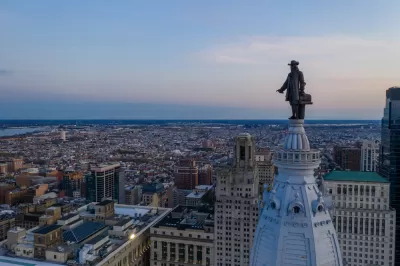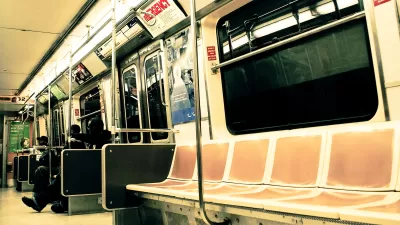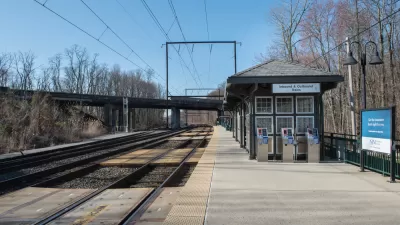In the Philadelphia region, residents of wealthier neighborhoods will be more likely to work from home in the future, thus altering travel patterns and transit usage, according to a new mapping project powered by artificial intelligence (AI).

"Students from Penn State University's Nittany AI Alliance, in partnership with the City of Philadelphia, the Southeastern Pennsylvania Transportation Authority (SEPTA) and Accenture, have developed an AI-driven algorithm to illustrate the 'teleworking risk' of census tracts across the Philadelphia region," according to an article by Kristin Musulin.
"The algorithm uses American Community Survey data and historical ridership data from SEPTA to indicate the percentage of jobs that can be done by telework in each tract, then displays those percentages in a heat map," according to Musulin.
The interactive SEPTA Future Telework Forecasting Tool allows for layers like bus and train routes to be added to the heat map. The creators of the map hope that the findings of the study can help planners prepare for a future that includes a lot more telework—and all the land use and transportation implications such a shift would entail.
One key characteristic the project reveals about "telework risk," or the potential for large numbers of people to work from home instead of commuting into offices and other workplaces, is that wealthier areas are more likely to see large numbers of people working from home.
FULL STORY: PSU team maps Philadelphia's telework trends

Study: Maui’s Plan to Convert Vacation Rentals to Long-Term Housing Could Cause Nearly $1 Billion Economic Loss
The plan would reduce visitor accommodation by 25,% resulting in 1,900 jobs lost.

North Texas Transit Leaders Tout Benefits of TOD for Growing Region
At a summit focused on transit-oriented development, policymakers discussed how North Texas’ expanded light rail system can serve as a tool for economic growth.

Using Old Oil and Gas Wells for Green Energy Storage
Penn State researchers have found that repurposing abandoned oil and gas wells for geothermal-assisted compressed-air energy storage can boost efficiency, reduce environmental risks, and support clean energy and job transitions.

From Blight to Benefit: Early Results From California’s Equitable Cleanup Program
The Equitable Community Revitalization Grant (ECRG) program is reshaping brownfield redevelopment by prioritizing projects in low-income and environmental justice communities, emphasizing equity, transparency, and community benefits.

Planting Relief: Tackling Las Vegas Heat One Tree at a Time
Nevada Plants, a Las Vegas-based nonprofit, is combating the city’s extreme urban heat by giving away trees to residents in underserved neighborhoods, promoting shade, sustainability, and community health.

How Madison’s Tree Planting Efforts Are Growing a Healthier Community
Madison’s annual tree planting initiative is enhancing environmental resilience, public health, and community livability by adding 1,400 carefully selected trees citywide, with strong community and institutional support for urban forestry.
Urban Design for Planners 1: Software Tools
This six-course series explores essential urban design concepts using open source software and equips planners with the tools they need to participate fully in the urban design process.
Planning for Universal Design
Learn the tools for implementing Universal Design in planning regulations.
Ascent Environmental
Borough of Carlisle
Institute for Housing and Urban Development Studies (IHS)
City of Grandview
Harvard GSD Executive Education
Toledo-Lucas County Plan Commissions
Salt Lake City
NYU Wagner Graduate School of Public Service





























